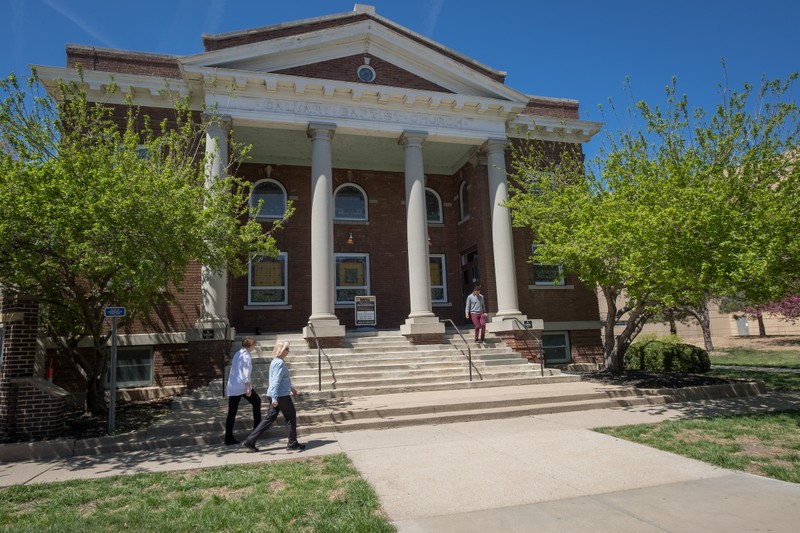Calvary Baptist Church
Introduction
Text-to-speech Audio
The Calvary Baptist Church was once a cornerstone of the Black community in Wichita. When urban renewal plans threatened it with demolition, community members banded together to save it and convert it into a museum of the history and culture of African Americans in Kansas.
Images
The Calvary Baptist Church building now houses the Kansas African American Museum.

Backstory and Context
Text-to-speech Audio
Urban renewal projects swept the United States in the second half of the 20th century, targeting urban decay and “blighted” areas that lacked access to adequate housing and public infrastructure. These projects involved clearing out urban areas and demolishing old buildings, and then redeveloping them, often connecting the areas to new stretches of highway. In many cases, urban redevelopment targeted Black communities and communities of color, displacing these residents and destroying their landmarks and historical artifacts. The Calvary Baptist Church in Wichita nearly met this same fate, but it was rescued through the efforts of Doris Kerr Larkins and other community members, who fought back against urban redevelopment and won.
The Calvary Baptist Church congregation was established in 1878 to serve as a spiritual center of the Black community in Wichita. In 1913, the congregation built a permanent church building in the downtown area. In a blow to the congregation, the original building was deemed a fire hazard not long after, but the members raised money and rebuilt the church themselves. Nearly everyone involved in constructing the new church was African American, including the architect, and the building is considered a monument to Wichita’s Black community.
For decades, the church building served not only as a church but as a center of life in the downtown area where many of Wichita’s Black-owned businesses were concentrated, providing a sense of hope and community. Many of Wichita’s civil rights leaders were baptized in the church, including Wichita’s first Black mayor, A. Price Woodard.
Over the years, the demographics of Wichita began to shift, and much of the African American community moved farther north of downtown. The church moved to a new location in 1972, and the Wichita Urban Renewal Agency purchased the historic church building and others in the neighborhood, with plans to flatten them and construct a parking lot or a highway loop in their place.
Some members of the community, however, recognized the importance of preserving the building that had been a cultural and spiritual anchor of the community. Doris Kerr Larkins, who had grown up as a member of the Calvary Baptist Church congregation, was committed to preserving the history of the church and its role in the African American story of Wichita. Beginning in 1972, Larkins gathered support from friends and church members, pushing back against the city’s downtown renewal plans. Finally, in 1973, the building was purchased by the Sedgwick County Commission, saving it from demolition. The following year, Larkins helped to establish the First National Black Historical Society of Kansas, a group that took on the next battle: fighting through all of the bureaucratic red tape required to turn the old church into a museum. At the same time, the society began accumulating archival materials and artifacts that told the stories of African Americans in Wichita and Kansas.
In 1993, the building was listed on the National Register of Historic Places, and in 1996, the Kansas African American Museum opened in the former Calvary Baptist Church building. Today, the historic building not only serves an invaluable educational function but also stands as a testament to the power of community-led action and the crucial role it plays in American democracy.
Sources
https://www.tkaamuseum.org/about
https://www.humanitieskansas.org/get-involved/kansas-stories/places/kansas-1972-uprooted
Kansas Tourism
